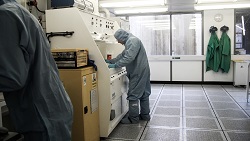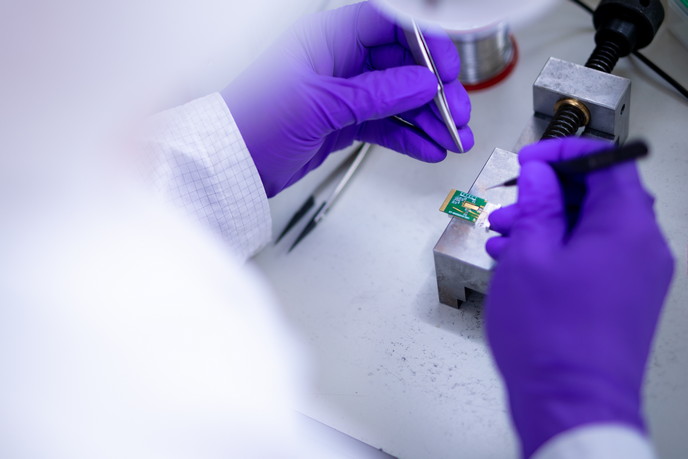Novel graphene ink stretches the limits of product development
Originally, the roadmap of HIGRAPHINK (Highly Conductive Graphene Ink) consisted in demonstrating the viability of graphene as an additive for organic semiconducting materials, to drive proof-of-concept Organic light emitting diode (OLED) displays. But the project was so successful at creating graphene with previously unthinkable properties that its host, the University of Cambridge, decided to stick to readying it for commercialisation. ‘It was probably the key challenge that we faced in this project,’ Prof. Andrea Ferrari, director of the Cambridge Graphene Centre and coordinator of the project, recalls. ‘At some point, we had to decide, based on the breakthrough we had, to focus on the production aspects of our graphene ink and stop exploring other options we had initially discussed.’ Who could blame them. Just two and a half years after the project was launched, six months after its end, HIGRAPHINK has resulted in the production of a material with a 100 % exfoliation yield, as opposed to the mere 1 % that could be achieved before the project team started their work. The new ink has a mobility 10 times higher than that of inks currently being used in OLEDs. Industry can now produce tens of thousands of litres per year where it could only hope for quantities in the range of milligrams daily before HIGRAPHINK results kicked in. ‘To get there, we started with graphite and used a technique called microfluidisation: We put the graphite through very small channels with a very high shear pressure, this very high shear takes the graphite flakes apart, and we get a yield orders of magnitude better than what people achieved before this project. Now we have inks that are highly conductive, with a low sheet resistance, that can be printed on a variety of substrates with properties unattainable before the start of the project.’ The team tested the new material in various devices. They notably created ultrafast lasers by incorporating the ink into polymers, on top of an optical fibre. They also used this material to modulate light in the terahertz range, which is the first step in creating ultrafast terahertz lasers. They created devices that can be photo-switched, and even novel memory devices. ‘We have also been able to extend this technique to other layered materials such as phosphorene or boron nitride,’ Prof. Ferrari enthuses. As a result, when it comes to applications, it would now seem that only the sky is the limit. HIGRAPHINK resulted in the creation of a spinoff called Cambridge Graphene Ltd, which was recently acquired by Versarien – a UK company exploiting novel materials to create innovative engineering solutions. Furthermore, the material is available for purchase from the Sigma-Aldrich catalogue, which now belongs to Merck. ‘Our intention was to create graphene with properties good enough to be used in transistors with a certain flexibility. This was also achieved, and we are now working with a company called FlexEnable to integrate our material into the design of future OLED displays,’ Prof. Ferrari adds. Whilst Cambridge University’s own professor of nanotechnology admits that it’s difficult to foresee what the most successful application of his graphene ink will be, he says that the final application may be in flexible and bendable devices, coatings, composites, sensors or energy storage devices. ‘We managed to develop a new technique to create large quantities of high-quality ink. This means that there is potential for demanding sectors in applications ranging from batteries to supercapacitors, displays, flexible electronics, optoelectronics, composites, coating or even medical devices. We are not restricted to one particular area,’ says Prof. Ferrari. One of the applications he particularly believes in is the ink’s integration into batteries. Thanks to this, enhanced batteries with higher storage density and recyclability may be produced. This integration process is in fact already on track: Although Prof. Ferrari says it’s too soon to give out more information, he has already obtained further funding to bring HIGRAPHINK’s production technique to batteries.
Keywords
HIGRAPHINK, graphene, ink, optoelectronics, batteries, OLED, FlexEnable, Cambridge Graphene, microfluidisation, ultrafast laser







